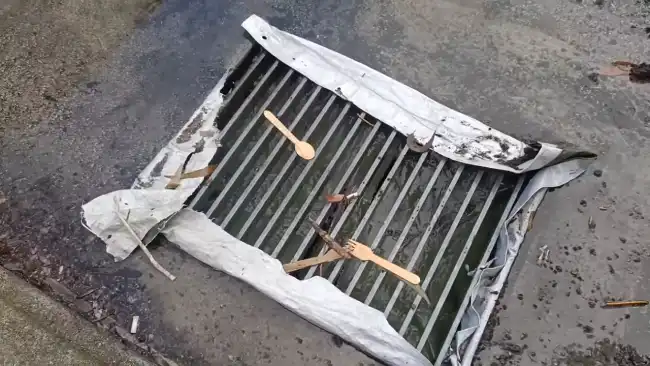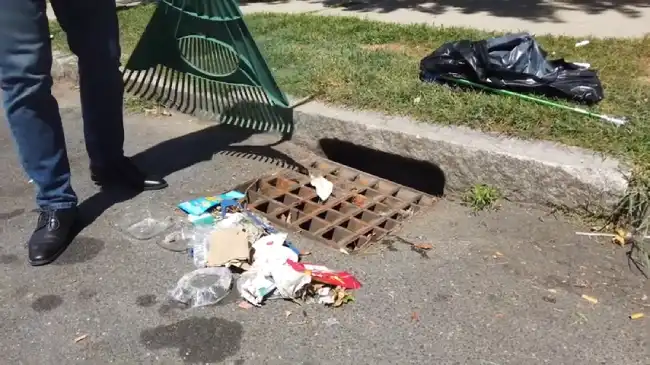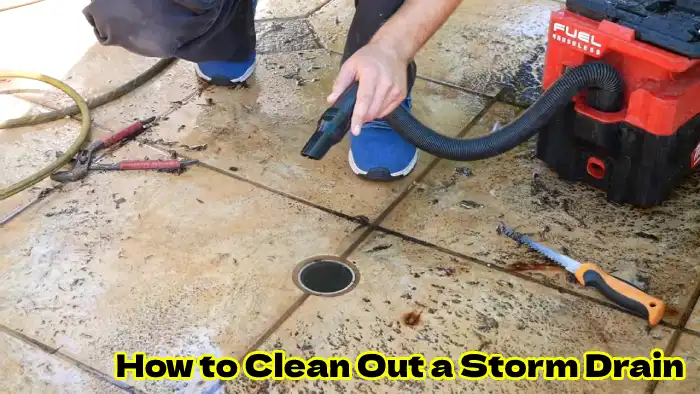Last Updated on June 5, 2023
Storm drains are essential for preventing flood damage to our cities during heavy rainfalls. Storm drains can quickly become clogged with the accumulation of debris such as leaves, branches, and waste. This blockage can result in overflowing water, affecting homes and streets alike.
Fortunately, there are ways to prevent such disasters from occurring. Using a Plumber’s Snake or Drain Auger and Garden Hose, you can ensure your storm drain system operates properly. You can keep your drains in good working order by regularly cleaning both the outside and inside of them.
With regular maintenance, the drain system will not have any problems. Discover how to clean a storm drain with these simple steps easily. Keep reading to find out more.
How to Clean Out a Storm Drain: Effective Methods

Don’t let flooding and costly repairs happen to you. Regularly cleaning out your storm drain is crucial to keep it functioning properly. Here’s how to do it:
A Must-Do Step: Clearing Debris from the Drain Opening
The first step in cleaning out a storm drain is to clear any visible debris from the drain opening, such as leaves, twigs, or dirt. You can do this with a shovel or rake.
Wearing gloves throughout the process is essential to avoid any injury or infection.
Method 1: With a Plumbing Snake or Drain Auger
If the clog in the drain persists even after clearing the debris, a drain auger or plumber’s snake can clear it effectively. The snake is inserted into the drain opening and pushed gently until resistance is felt.
The tool is then rotated clockwise while applying steady pressure to break up or retrieve blockages within the pipe. You should continue rotating and pushing the tool until you feel the blockage loosen or come out.
Method 2: Flushing with a Garden Hose and High-Pressure Nozzle
Whenever debris remains in the drain, using a high-pressure nozzle and a garden hose is the next cleaning method. Insert the hose as far as you can into the drain opening. Dislodge and flush away debris in the drain with high-pressure water.
This method is ideal for cleaning out any lingering debris and clearing any small blockages.
Method 3: Seeking Professional Assistance
Suppose you cannot clear the clog in the storm drain after using methods 1 and 2. In that case, the next option is to seek assistance from a professional plumber or drain cleaning service. Such professionals have specialized equipment and tools for effectively cleaning out storm drains and handling more stubborn blockages.
What are the Risks of Clogged Storm Drains?

Clogged storm drains can have serious consequences, including flooding and water damage, health risks, and environmental damage.
1. Flooding & Water Damage
Excess water from clogged storm drains can lead to localized flooding, resulting in potential water damage to property and a safety hazard to those nearby. Flooding is more common in urban areas, where storm drains drain rainwater away from streets and low-lying areas.
Drains that get clogged with debris impede water flow. As a result, it will accumulate on sidewalks and roads, posing a danger to pedestrians and motorists. The accumulation of excess water can also seep into buildings. It leads to costly repairs as personal belongings or inventory may be damaged or destroyed.
2. Health Risks
The accumulation of contaminated water in storm drains can pose significant health risks to individuals exposed to it. Infected mosquitoes that breed in stagnant water can carry diseases such as West Nile virus and dengue fever, which are transmitted through bites.
Contact with standing water may introduce harmful bacteria into the bloodstream leading to illnesses such as cholera and dysentery. The presence of hazardous chemicals that have seeped into storm drains also contributes to the potential for contamination.
3. Environmental Damage
Pollutants that accumulate in storm drains can lead to water quality degradation in nearby rivers, lakes, and other bodies of water. These pollutants may include debris, oil, pesticides, fertilizers, and contaminants from urban areas.
Clogged storm drains are a common cause of poor water quality due to the lack of filtration systems or treatment facilities being reached. As a result, contaminated water can potentially harm aquatic life and ecosystems near these bodies of water.
How to keep storm drains clean?

To prevent the contamination of waterways, proper disposal of yard waste and removal of pet waste is essential.
During windy days, keep trash container lids tightly closed to prevent litter from being blown into the storm drain. Also, ensuring the property is clear of leaves and debris will help prevent clogging up of the storm drain.
Aside from that, pet waste must not be left on the ground, or it will be carried by stormwater into streams and eventually into the storm drain. These measures can help keep storm drains clean and prevent contaminated water from causing environmental damage.
What should not be put down a storm drain?
Chemicals, cleaners, fertilizers and other pollutants must not be disposed of in storm drains. This includes any liquid or solid waste that could harm the environment if released into a storm drain system.
Storm drains are designed as part of an efficient drainage system to carry runoff away from roads and buildings during rainstorms. Disposing of anything other than water into these systems can introduce pollutants to local waterways, seriously harming aquatic life and human health.
Remember that even small amounts of certain chemicals or substances can greatly impact the environment. Therefore, avoiding dumping anything down a storm drain is best.
Clear Storm Drains: Vital for Healthy Communities
Storm drains are an important part of any community. Keeping these drains free of debris and clogs is essential to prevent flooding and other environmental damage. Clogged storm drains can result in water pollution, soil erosion, and flooded roads and properties.
Keeping storm drains clean requires regular maintenance, such as removing leaves or other debris that may block the flow. Remember not to put anything down a storm drain that could create a clog or pollute the water supply, such as oil, paint, fertilizer or pet waste.
Implementing these uncomplicated measures is crucial to preserve the longevity and efficiency of a community’s storm drain system.


